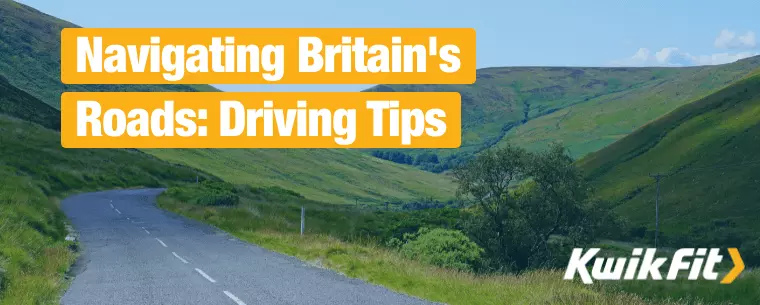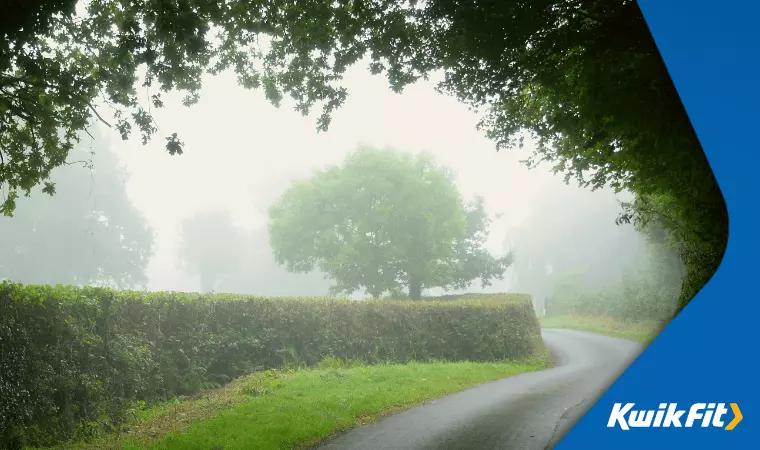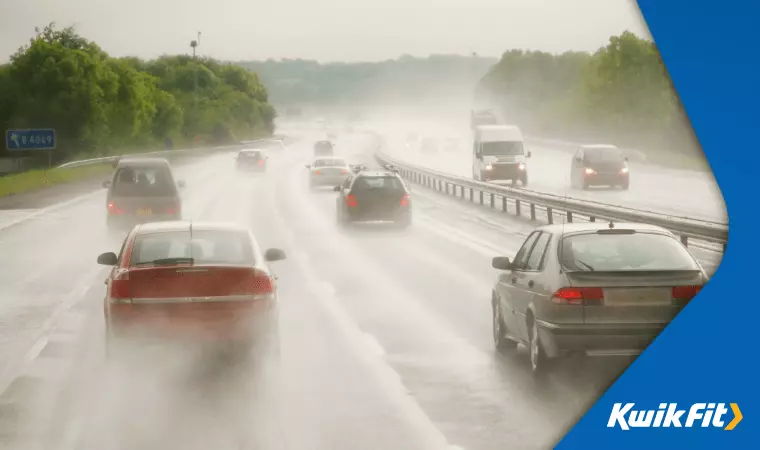Navigating Britain's Roads: Driving Tips
Jack Dreyer | Wednesday 25th January 2023 12:30pm

Are you a learner looking to get to grips with the different types of roads you’ll drive on once you pass your test? Or, perhaps you’re planning to visit the UK soon and want to understand its motorways and its dual carriageways?
There are, after all, over 247,800 miles of road in the UK as of 2021.
Whatever your reason — even if just to refresh your memory before a staycation road trip — use this blog as a guide to driving on the various types of roads in Britain. While we all know the basics (drive on the left, abide by the speed limit, and so on), how many of us can confidently say that we know and can recall all of the rules for driving on Britain’s diverse map of roads?
The different types of roads in Britain
Broadly speaking, the UK’s roads can be divided into three categories:
- A-roads
- B and C-roads
- Motorways
Motorways
Starting with one of the most complicated types of road: the humble motorway. There are around 2,300 miles of motorway in the UK linking core towns and cities.
Motorways do not have footpaths or cycle lanes as this would be too dangerous. They do, however, have multiple lanes (usually three to five), a central reservation, two carriageways, and a hard shoulder for emergencies.
You can tell you’re on a motorway if:
- The road is prefaced with an “M-” EG: ‘M25” or “M1”
- The road signs have a blue background with white text
- There are large overhead signs giving traffic information
How to drive on a motorway
Driving on a motorway can seem daunting as there are so many factors to consider. However, the best advice we can give is to abide by the signs. Something unique to motorways are the overhead ‘gantries’ (signs hanging above the lanes). These signs — often electronic — provide critical, up-to-date information about lane closures, speeds, and things like accidents. So, keep an eye on these.
All UK motorways are free to use, except the toll on the M6 around Birmingham. There are also a series of service stations on UK motorways, allowing drivers to take regular rest breaks and use the facilities there.
When coming off a motorway, either at a service station or at a junction, it is made easier by numbers and signpost markers placed at 100-yard intervals — these encourage drivers to move over to the left-hand lane in good time.
As a general rule of thumb, though, motorway drivers should always use the left-hand lane when they are not overtaking. If you are caught overtaking in the left-hand lane or cruising out on the right-hand lane without reason, you could be fined.
Can you drive at 80mph on the motorway?
On motorways, the speed limit is 70 mph. However, this may change if you are on a smart motorway that has variable speed limits. We explain more about this type of motorway here. That said, the speed limit will never be increased to higher than 70mph on a variable speed motorway.
Slow vehicles, such as bicycles and tractors, are not allowed on motorways as they are likely to cause delays and hold up traffic.
Can learners drive on the motorway?
No. Learner drivers are not able to drive on motorways until they have passed their driving tests unless they are:
- Accompanied by a certified instructor
- Driving in a dual-control car with L plates
- Deemed to be competent enough to drive on a motorway by their instructor
Driving on A-roads
A-roads are the major roads that connect different towns and cities. They are also often known as “trunk” or “principle roads”. A-roads are comprised of single and dual-carriageway roads across both rural and urban areas.
A-roads in urban areas often have footpaths and cycle lanes on them, but never on dual carriageways. You can tell that you are driving on an A-road in two main ways, though there are a number of subtle clues:
The road begins with an ‘A-’ prefix (EG, ‘A2’ or ‘A258’).
The road signs have a green background with white writing
On A-roads, the speed limit can be anything between 20 mph and 60 mph; however, on dual carriageways, this limit increases to 70mph. A dual carriageway is a road with a central reservation where traffic is travelling on either side.
When driving on A-roads:
- Be sure to look out for pedestrians and cyclists
- Keep an eye on the changing speed limits
- Remember that junctions and roundabouts are very common on this road type
- If on a rural A-road, stay alert as there are usually plenty of twists, turns, hidden junctions, and sharp bends as indicated by chevrons
B- and C-Roads
Lastly, there are B- and C-roads — otherwise known as ‘minor roads’. These roads connect Britain’s smaller towns and villages and, surprisingly, make up most of the total road length in Britain. In 2021, there were over 216,000 miles of minor roads in Great Britain in 2021, consisting of:
- 18,900 miles of B-road
- 197,100 miles of C- road
You’ll know whether you are driving on a B- or C-road as they are usually only ever a single carriageway. While there are, more often than not, two lanes for cars to pass by each other, sometimes in rural areas these roads become so narrow that just one car has to take priority over another. B- and C- roads have signs with a white background and black writing.
Pedestrians and cyclists are very common on these types of roads, often travelling on the road itself as there aren’t always footpaths or designated cycle lanes.

How to drive on B- and C- roads
To stay safe on this type of road, adhere to the speed limit — but be sensible. The national speed limit often applies to B- and C- roads; however, that doesn’t mean you have to drive at 60 mph the whole time.
This can be dangerous as there are plenty of hidden bends, dips, junctions, and corners on this road type. Due to the rural setting of many B- and C- roads, you should also keep an eye out for livestock on the road (ducks, sheep, cows) and occasional flooding from ponds. There are also likely to be slow agricultural vehicles on these roads and a lack of proper signposting if you get right out in the sticks.
Make good use of passing places, slow down at blind bends, and try to scan far ahead to avoid any collisions or prevent having to reverse back a long way.
Driving in adverse conditions
Also, it’s important to note that, as well as the type of road you’re driving on changing, the weather conditions may also change.
And, when the weather changes, so too does the surface of the road which has a knock-on effect on factors such as vehicle handling and stopping distances.
Two of the most challenging conditions to drive in are ice and rain, especially when there’s plenty of surface water laying on the road. While we have covered these topics extensively in respective blogs of their own, we’ll give you a quick rundown here too.
Advice for driving on icy roads
When driving on icy roads, remember that your braking distance will be much longer and your control over steering will be significantly reduced. The impact of ice on driving is so significant that there is even a question in the UK driving theory test, “What would suggest you're driving on an icy road?”
Here’s a brief list of ‘dos’ for driving on icy roads. Do:
- Anticipate a change in speed far in advance to avoid sharp braking
- Scan ahead for potential hazards that may cause you to swerve or brake suddenly
- Scrape your windscreen and mirrors before departure to maximise visibility
- Leave plenty of space between you and the car in front to avoid collisions
- Conduct all manoeuvres as smoothly as possible to minimise skin risk
- Use higher gears
- Keep both hands on the wheel for maximum control should a skid occur
- Drive at a slower speed than usual
- Try not to stop on hills
Advice for driving in heavy rain or on a flooded road

Heavy rain can massively reduce visibility, while surface water negatively impacts the ability of your tyres to grip onto the road’s surface, especially if their treads are thin and therefore ineffective at displacing water when moving.
So, when driving in wet weather, Do:
- Rely on your windscreen wipers
- Maintain a sensible, slower speed
- Use your dipped headlights to maintain strong visibility of the road
- Allow for greater stopping distances, braking gently in good time and creating more space than usual between you and the car in front (ensuring it is at least 4 seconds). Pulling back will also reduce the extent to which your vision is obstructed by spray from other vehicles.
- Resist the urge to drive through puddles, especially at the side of roads as they could be deeper than you think, concealing dangerous potholes that could cause damage.
For more in-depth wet weather driving advice, read another of our blogs here.
Prepare for all conditions and terrain with Kwik Fit
Regardless of whether you’re driving in inner-city traffic a lot or on motorways, come rain or shine, Kwik Fit has the motoring solution for you. To keep you safe on the roads in Britain, we have an impressive range of specialist tyres and vehicle accessories. Not to mention the driving advice we provide on our blog.
If you have any questions about your vehicle, get in touch with the experts at your local Kwik Fit centre today.
Any facts, figures and prices shown in our blog articles are correct at time of publication.
Featured Articles
Is it Illegal to Drive With One Headlight?
Saturday 19th July 2025
Wondering if it’s illegal to drive with one headlight? Learn about the safety risks and penalties of illegal blown bulbs and why you should fix them promptly.
Air Con in EVs & Hybrids: Experts Answer Your Questions
Monday 30th June 2025
Does air con drain EV batteries? Can you use the air con while charging an electric car? Find out the answers to these questions & more from Kwik Fit’s experts.
Why Is Your Car Making a Noise? Fixes & Tips
Friday 13th June 2025
When your car starts making unexpected noises, it can certainly be quite disconcerting; it may be nothing to worry about, but here’s what you need to know.









